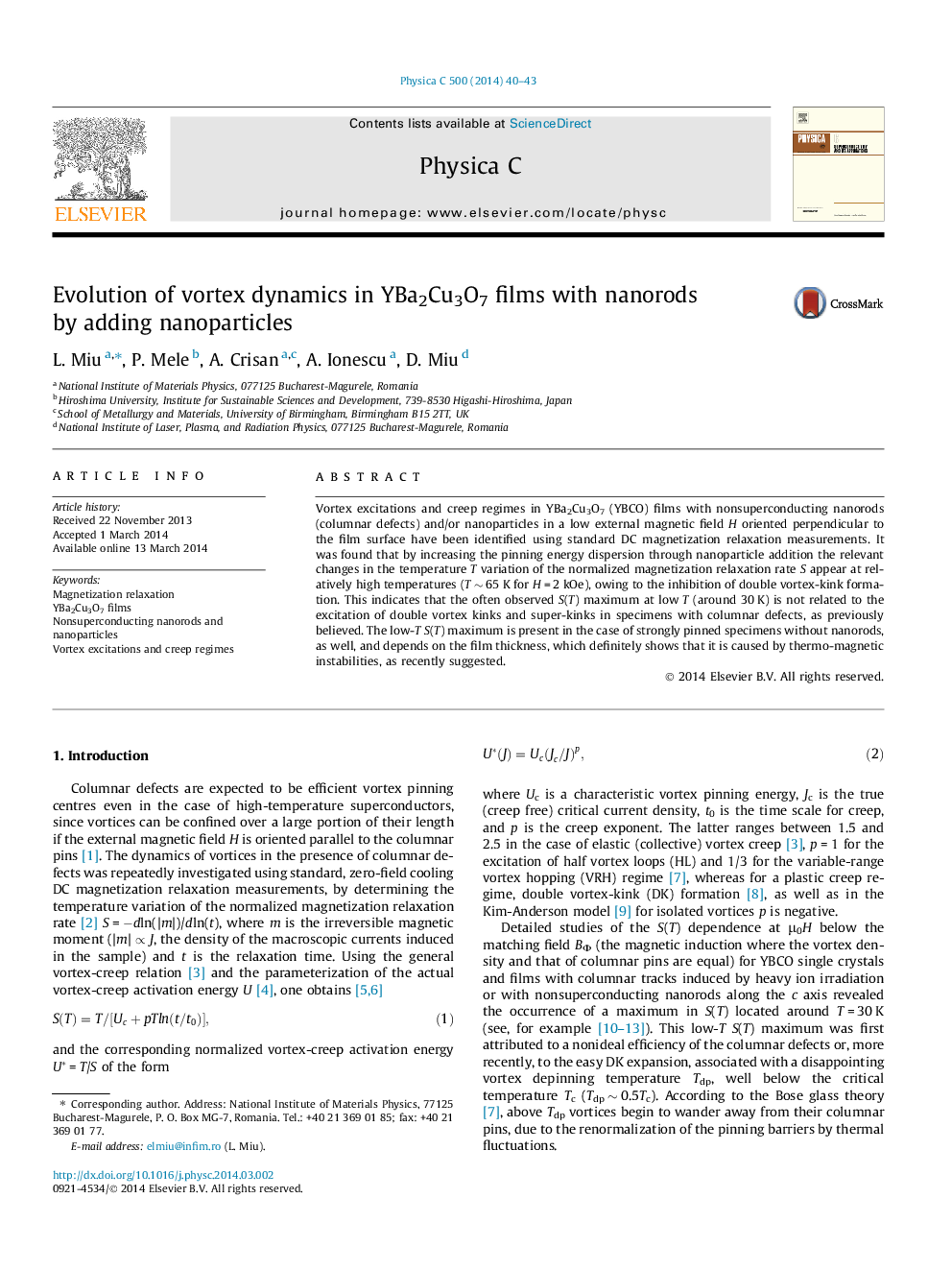| Article ID | Journal | Published Year | Pages | File Type |
|---|---|---|---|---|
| 1818193 | Physica C: Superconductivity and its Applications | 2014 | 4 Pages |
•The large low-T magnetization relaxation in superconductors with nanorods has an extrinsic origin.•The double vortex kinks appear at temperature values much higher than usually believed.•By adding nanoparticles, the double vortex-kink formation is inhibited.
Vortex excitations and creep regimes in YBa2Cu3O7 (YBCO) films with nonsuperconducting nanorods (columnar defects) and/or nanoparticles in a low external magnetic field H oriented perpendicular to the film surface have been identified using standard DC magnetization relaxation measurements. It was found that by increasing the pinning energy dispersion through nanoparticle addition the relevant changes in the temperature T variation of the normalized magnetization relaxation rate S appear at relatively high temperatures (T ∼ 65 K for H = 2 kOe), owing to the inhibition of double vortex-kink formation. This indicates that the often observed S(T) maximum at low T (around 30 K) is not related to the excitation of double vortex kinks and super-kinks in specimens with columnar defects, as previously believed. The low-T S(T) maximum is present in the case of strongly pinned specimens without nanorods, as well, and depends on the film thickness, which definitely shows that it is caused by thermo-magnetic instabilities, as recently suggested.
